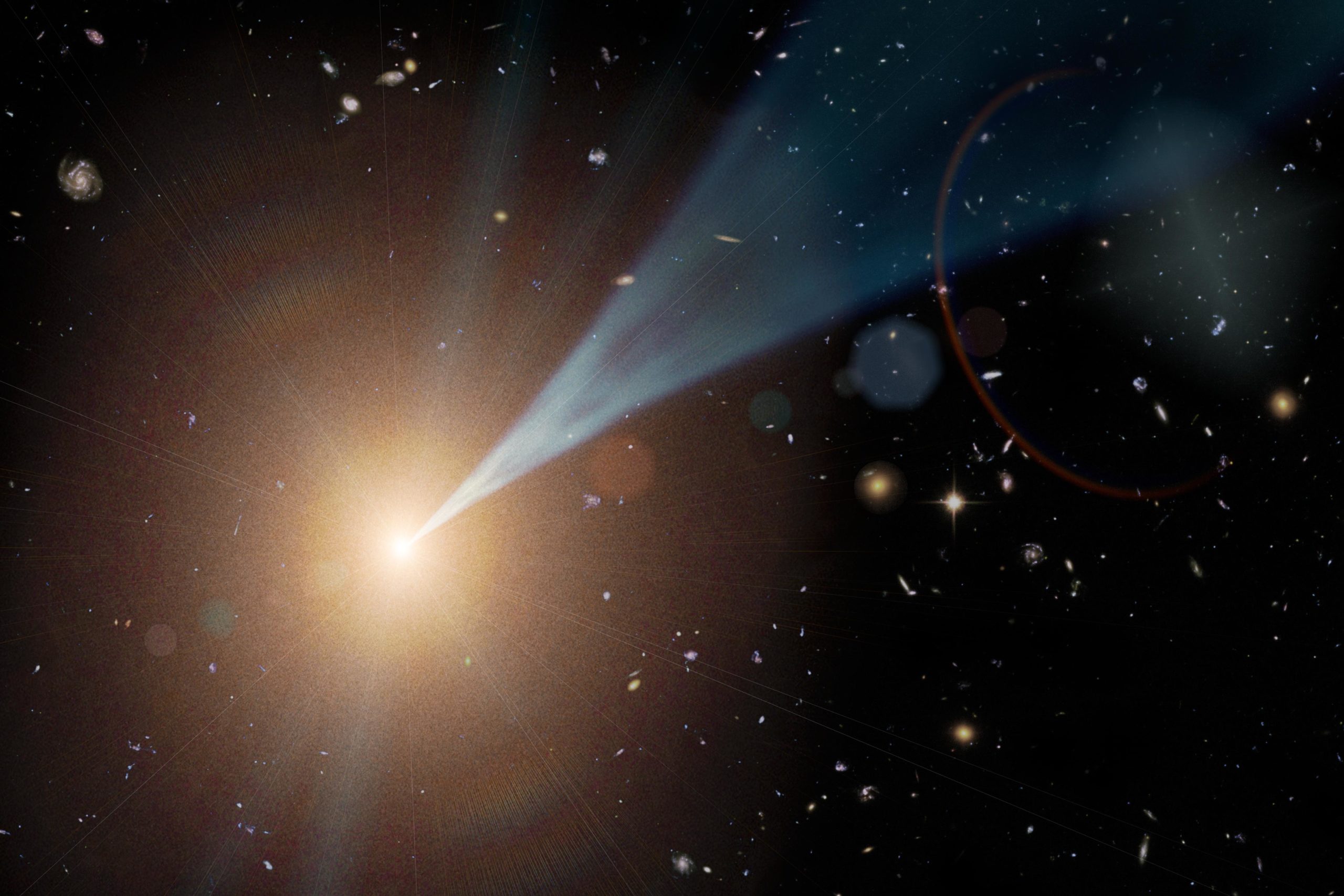 Scientists discover supermassive black hole that now faces Earth. Credit: NASA/JPL-Caltech / Royal Astronomical Society / CC BY 4.0
Scientists discover supermassive black hole that now faces Earth. Credit: NASA/JPL-Caltech / Royal Astronomical Society / CC BY 4.0An international team of space experts has discovered something incredible: a galaxy that has been reclassified due to some unusual activity going on in its core.
The galaxy is called PBC J2333.9-2343, but after some new research, scientists have realized that it’s actually something different. This discovery has been shared in the Monthly Notices of the Royal Astronomical Society.
Located an incredible 656 844 372 light years away, PBC J2333.9-2343 is now known as a giant radio galaxy that stretches across 4 million light years. The most surprising part for researchers is that it has a blazar at its center.
A blazar is a superactive area in a galaxy with a relativistic jet that travels very fast and is pointed toward us. These jets are incredibly powerful and are considered one of the most intense things in the universe.
What makes PBC J2333.9-2343 so interesting is that its jet has suddenly changed direction by as much as 90 degrees. Before, it was moving in a way that was perpendicular to our line of sight, but now it’s pointing straight at us.
Scientists have discovered supermassive black hole that now faces Earth 😳 pic.twitter.com/W4MqpGcwzk
— Daily Loud (@DailyLoud) March 26, 2023
Composition of blazars
These jets are made up of tiny charged particles such as electrons or protons, which move extremely fast, almost at the speed of light. These particles circle around a strong magnetic field, producing radiation that can be seen across a wide range of electromagnetic waves.
The blazar jet in PBC J2333.9-2343 is believed to originate from the supermassive black hole located in its center or possibly from nearby. When the jet is aimed directly at us, the radiation it emits is significantly stronger than that from the rest of the galaxy.
🚨| NEW: Scientists discover supermassive black hole that now faces Earth‼️😳
Scientists are currently unsure what sparked the change in direction, It is also unclear how the direction of the black hole will affect our galaxy. pic.twitter.com/1wV1Luvk6M
— Pubity (@Pubity) March 26, 2023
This results in high-intensity flares that are even more powerful than those seen in other radio galaxies, leading scientists to reconsider their classification of this amazing phenomenon.
The lead researcher, Dr. Lorena Hernández-García, explained that their initial hypothesis was that the direction of the relativistic jet emanating from the supermassive black hole in the galaxy had shifted. To confirm their assumption, they conducted extensive observations.
Their findings revealed that the core of the galaxy was no longer providing sustenance to the lobes, indicating that they were ancient and no longer active. Meanwhile, structures located nearer to the core showed signs of more recent and ongoing activity in the form of younger, active jets, said Dr. Lorena.
Determination of its classification
When the two jets of a galaxy are pointing toward the sky, it is classified as a radio galaxy. However, if one of the jets is pointed toward us, the Active Galactic Nucleus (AGN) of the galaxy is known as a blazar.
The galaxy PBC J2333.9-2343 was originally thought to be a blazar, but recent observations have shown that it is actually a radio galaxy with a blazar at its center.
In the past, changes in the direction of jets have been observed in X-shaped radio galaxies, but this is the first time that such a phenomenon has been observed in a nuclear outburst originating from the AGN, according to the Royal Astronomical Society.

 1 year ago
65
1 year ago
65











 English (US)
English (US)